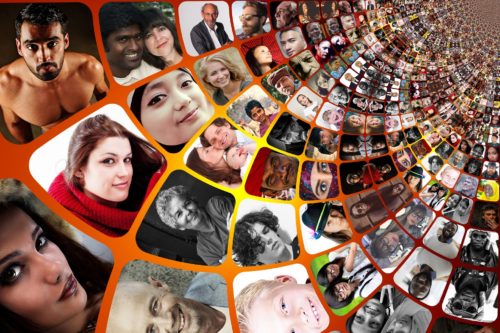How to Start Relationships
A powerful tool you can use to break the ice and start new relationships consists of two simple steps.
“The way to talk to a man, then, would be to find something to like about him and to discuss something with which he can agree.” — L. Ron Hubbard from The Problems of Work
You can use this simple two-part system to form a friendship with anyone.
1. Simply walk up to someone and notice something you like about the person. You do not need to mention it unless it helps you with the second step.
2. Find and discuss something you agree on. To do this just ask questions. “What do you like best about ____ (these meetings, this website, this park, etc.)?” “What is your opinion about _____?” “What type of work do you do?” “Have you been waiting long?”
Example #1
You want a friendly relationship with the new guy who just moved in.
1. Find something to like about the neighbor. You are leaving your house and see the new neighbor getting out of his car. You look him over and you like his haircut and his jacket. This step is done.
2. Discuss something with which he can agree. For example, the weather, the neighborhood or your houses. “Great weather today!” or “Hi, I like your jacket. Can I ask where you got it?” “Your house looks much nicer since you moved in.
Example #2
You are sitting in an airport waiting for your flight to Chicago. You decide to establish a relationship with the businesswoman sitting next to you.
1. You first find something you like about her. You like her red-leather briefcase.
2. You then say, “Nice briefcase!” She smiles and says, “Yes, I like it.”
You keep finding things to agree on. “Are you from Chicago?” She starts to chat. You agree that Chicago weather is too cold. You then talk about her business.
Example #3
A car salesman is very successful because he knows how to use this technique. He establishes relationships within seconds of meeting people. People he meets in elevators, workers in restaurants, clerks in stores, even people on sidewalks.
He instantly finds something he likes about each person and then finds something the other person can agree on.
He never lacks new customers. Everyone likes being around him.
Example #4
One Friday night, you get on a crowded train and can only find one empty seat. You have to sit next to a large, body-pierced, tattooed, pimply-faced teenager with hamburger breath.
You find something to like about him: he has a beautiful sunset picture on his shirt. You feel better about the fellow and start to find something with which he can agree. “Where did you get that great shirt?”
You continue chatting and learn new things about today’s teenagers.
You enjoy the train ride.

Top Five Benefits of Mastering this People Skill
- You can chat with anyone anywhere.
- You can turn strangers into potential clients or employees.
- You turn social events to your advantage.
- Business meetings, with people you have never met, are more productive.
- You can form friendships with new candidates for love and marriage.
Exercises
Exercise #1
Imagine being able to make friends with anyone. Where would you use this skill? Who would you want as a friend? Examples: People you see in public places like a store, park or coffee shops. People you see or meet online. People you see at your work, church or social events.
Exercise #2
Ask yourself, “How would mastering this people skill help me succeed?” For example, some of the Top Five Benefits above.
Recommendations
Action Step #1
Go to a crowded area. Look at everyone and imagine they are all your friends. Use the two steps to become friends with one person, even if you will never see him or her again.
Action Step #2
1. Write the names of 1-3 people, or types of people, that you wish to form new relationships with. It can be a person, like “Sharon” or a type of person, like “A potential customer who walks into our store.”
2. For each person, guess what you might like about him or her. For strangers, just use your imagination.
3. For each person, describe what you might be able to agree on and discuss.
4. Set a target date for forming each of these new relationships.
